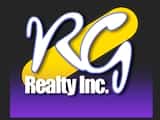Net Operating Income to Evaluate Commercial Properties
Net Operating Income or NOI, is an important and widely-used metric for determining the selling price of a commercial building. All investors starting out in commercial real estate need to understand what NOI means in real estate terms. Then they must learn how to apply it to a prospective purchase. Experienced investors realize that while income is not the only way to derive a fair value, it is the fastest way to figure out if a property is worthy of consideration.
To calculate NOI, all direct expenses involved in the day-to-day operations of the building are deducted from total rental income. These expenses include a variety of maintenance and repair expenses, plus utilities, supplies, security, management commissions and property taxes. These are the core operating expenses that show up on a standard income statement (also called “operating statement”) for a commercial property.
Mortgage payments of interest and principal are not considered operating expenses. In addition, certain large expenditures, such as leasing commissions and capital improvements, are also left out because they are not a normal part of everyday operations. Sometimes management fees are not included because they can vary greatly according to the style of ownership.
Experienced investors understand what might be missing from a statement of NOI in a property listing. They compensate for these expenditures by making their own projections of income and cash flow for any property they are interested in buying. It is essential for the beginner investor to learn how to create such projections before venturing into buying commercial real estate.
Why an Average NOI Is Best
Net operating income is a rather odd metric to use for evaluation because it is subject to great variation. An income statement from one year may vary from another by 100 percent or more, depending on many factors.
For example, perhaps several large repair projects were done in the same year in which several large tenants vacated their spaces. It is always easier to fix up an empty space than an occupied one, so these two events often occur together. That year’s financial statement could show a net loss of $100,000. Another year, when the building was fully occupied and repair bills were modest, a net income of $150,000 could be the bottom line. This inconsistency is to be expected when evaluating commercial property.
To offset this variability, it is common to use the last three to five years of net income and draw an average. Ask the listing broker how many years were averaged out to get the figure provided. If it only represents the most recent year, which was an unusually profitable one, it doesn’t tell you that much. While it is still better than nothing, you need more than one year’s net income to make an informed decision.
Of course you will not have access to in-depth, detailed information until you make an offer to purchase and put up a deposit. Some owners will be more forthcoming with financial documents in the pre-offer stage, but most will not. Understandably, they don’t want to share information that is usually kept private until they know you are a serious potential buyer. When you make an offer on a property, you will make it contingent on performing due diligence, which includes examining all relevant financial documents going back at least three years, and all current leases. So you will be able to terminate your offer if the results of due diligence prove unsatisfactory. Nonetheless, it’s always best to gather as much information as you can before getting to this stage to save time, effort and emotional investment.
NOI and the Cap Rate
So how do you use the net operating income to evaluate a property? The most common is the capitalization rate (cap rate) equation, which is NOI divided by Cap Rate = Price. Of course you have to know what the general market cap rate is in your area. To find this rate, you can do your own survey of properties from an online site such as LoopNet.com, which provides information on commercial properties for sale in your area. You can also ask a knowledgeable broker in your area what he or she thinks the market cap rate is. You can also ask a number of other experts in the field, such as appraisers, mortgage brokers, bankers, and so on. It is a good idea to try all of the above.
The cap rate is usually expressed as a range; for example between 7 and 8 percent. Try a full range of values that you can then average out or otherwise play around with in your own spreadsheet. A commercial property with an average annual NOI of $80,000 in an area with a market cap rate of 7-8% would be priced somewhere between $1,000,000 and $1,143,000.
Net operating income
Net operating income is also an important way of comparing properties to one another. It is interesting to compare two buildings in close proximity to each other and if you have access to NOI figures for both. You will soon see that many factors will affect bottom line figures, including expense-to-profit ratio, management style, and vacancy rates.
Because of such variability and uncertainty, using NOI by itself or even as your main measuring tool is not advisable. As any appraiser will tell you, square footage, age, condition and overall desirability of the building, and the economic climate of the city or neighborhood, are all relevant factors you must consider. It is best to use a combination of tools to figure out if a specific property is worth purchasing at a particular price.
Commercial real estate is a complex subject and you need a big-picture perspective to be a successful investor. But NOI still stands out as one of the most important tools for the simple reason that commercial buildings need to be profitable. While it is easy to speculate on a particular building’s profit potential, nothing beats seeing the actual proof of its current profitability under the current owner, even if you must adjust for variables. Using NOI is a good way to begin the process of evaluating a possible investment.
Copyright © 2014 Roberto Gonzalez All Rights Reserved
33 W Franklin St, Suite 100 Hagerstown MD 21740



